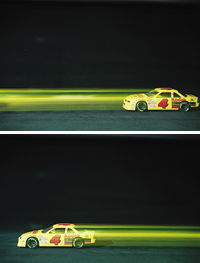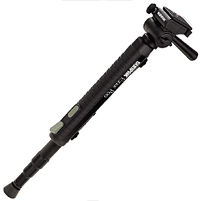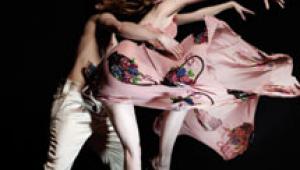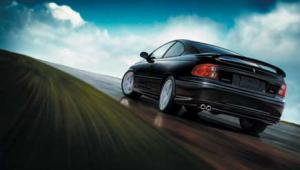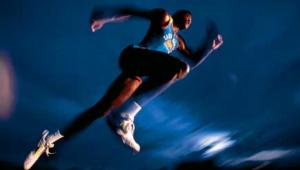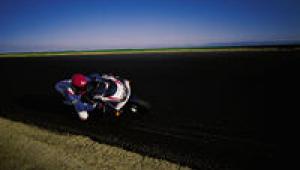Action Photography Page 5
| Sometimes its useful to be able to use the flash unit off-camera. Most higher-end SLRs and flash units permit you to do this, either by means of an extension sync cord, or wirelessly. You can also use an on-camera (or even built-in) flash to fire an off-camera unit via a slave (an electronic eye that fires the unit connected to it when it "sees" the flash of the camera-connected unit). Using the flash off-camera gives you more lighting flexibility (you're not stuck with that flat on-camera flash look), and can eliminate red-eye in action shots of people (by increasing the distance between the flash and the lens axis). The brief flash duration will freeze fast action. With automatic or adjustable-power manual units, you'll get the briefest durations at close shooting distances. Insect and bird photographers use flash at very close range because the resulting durations—as short as 1/30,000 second with some units used at their closest operating distance—can freeze just about any action, while the power at such close range is sufficient to let them stop the lens down for increased depth of field. (Note: At maximum range, flash units have longer minimum durations—1/1000 or longer—but that's still short enough to freeze much action.) For long-range telephoto flash photography, you can extend the range of your flash by attaching a device like the Project-A-Flash (805/528-0701) over your flash unit. This is a large tube containing a Fresnel lens that focuses the light from the flash, narrowing the angle of coverage to about the view of a 300mm lens, but greatly extending the range—if your flash unit lets you shoot up to 40 feet away at f/4, attach the Project-A-Flash, and you can shoot up to 114 feet away at f/4. Film The pro action photographers at our sister publication Dirt Rider magazine (who provided the motorcycle-action photos accompanying this article) really like Fujichrome Velvia (ISO 50, but they rate it at EI 40) for outdoor and close-up flash shooting. We've had good luck with the ISO 100 color-slide films (Fujichrome Provia 100F and Kodak Ektachrome E100VS, for example) whenever the light level permits their use. We push them to EI 200 when we need an extra stop of speed. If we need more speed, we generally switch to ISO 400 and 800 color-print films. In black-and-white, we like the ISO 400 chromogenic films, and go to the superspeed films such as Kodak T-Max P3200 and Ilford 3200 Delta when we need that much speed. Accessories A monopod is a great alternative to a tripod. In effect a tripod leg with a mount for the camera at the top, it's not as steady as a tripod, but it's steadier than hand-holding the camera and long lens, and is sometimes permitted where tripods are not. A good tripod head is important for action work. It should allow you to pan the camera smoothly to track a moving subject, while holding the camera steadily along the other axes. Thus, a three-way pan-tilt head is generally better for action than a ball head is. Some monopods come with a head, but it's not hard to pan a camera that is attached directly to a monopod. A quick-release mount is important, so you can quickly remove the camera for hand-held shooting, and attach it for tripod-steadied shots. For serious action shooting, you probably have a lot of gear—a camera body, several lenses, a flash unit, lots of film, etc. So it's nice to have a convenient means of carrying it, and keeping it all together as you shoot. A rugged soft camera bag is probably the best choice for this. A hard case provides more impact protection, but is bulkier, and might not be permitted on sidelines. A photo vest holds lots of stuff and keeps your arms free, and is a great idea unless you have some lenses that are too big and heavy to carry that way. |
- Log in or register to post comments
